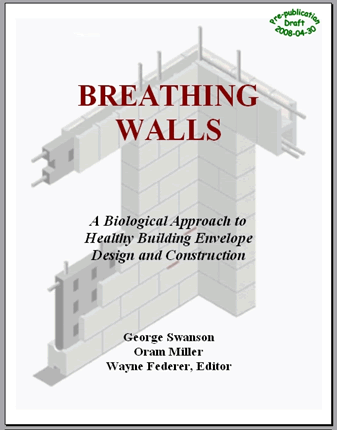New Building Manual
Building Biology-Based New Building Manual
Our new building manual is available by clicking here.
Oram Miller, BBEI, practicing building biologistTM in Southern California, George Swanson, BBEI, builder and building biologistTM in Austin, Texas, and Wayne Federer of Hudson, Wisconsin have collaborated to create a manual of protocols for the design and construction of a healthy new or remodeled home or office. We present the rationale behind these protocols and provide workable alternatives to the building practices in use today that unfortunately do not create optimum health for occupants.
The first edition of the manual, distributed in 2004, covered indoor air quality, a healthy building envelope, choices of flooring and materials, and a healthy electrical wiring protocol. It was based upon principles taught by the International Institute for Bau-biologieTM and Ecology, in Clearwater, Florida.
In 2008 we created an updated and much expanded edition, and were joined by Wayne Federer of Wisconsin as editor and contributor. Wayne is a chemist and technical writer who has taken traning in Building Biology.
In this latest edition we have narrowed our focus to the topic of the building envelope (walls, slab, foundation and roof). We present natural, non-toxic, breathable (hygroscopic) alternatives to the protocols and materials currently in use. We cover water intrusion, mold, and the problems with current building practices.
We then present time-honored procotols for designing and building cost-effective, sustainable, and healthy new and remodeled homes and work spaces. These alternative approaches avoid mold and provide thermal mass with good thermal performance. They augment and enhance sustainable, green approaches such as those offered in the US Green Building Council’s LEED for Homes program.
Architects, designers, builders and homeowners can learn how to blend the best of ancient building practices with non-toxic modern techniques to provide high performance buildings using best practices, while fully enhancing human health.
To order a copy and learn more about the book, including viewing the Table of Contents and sample chapters, click here to log onto our website for the book, www.breathingwalls.com.